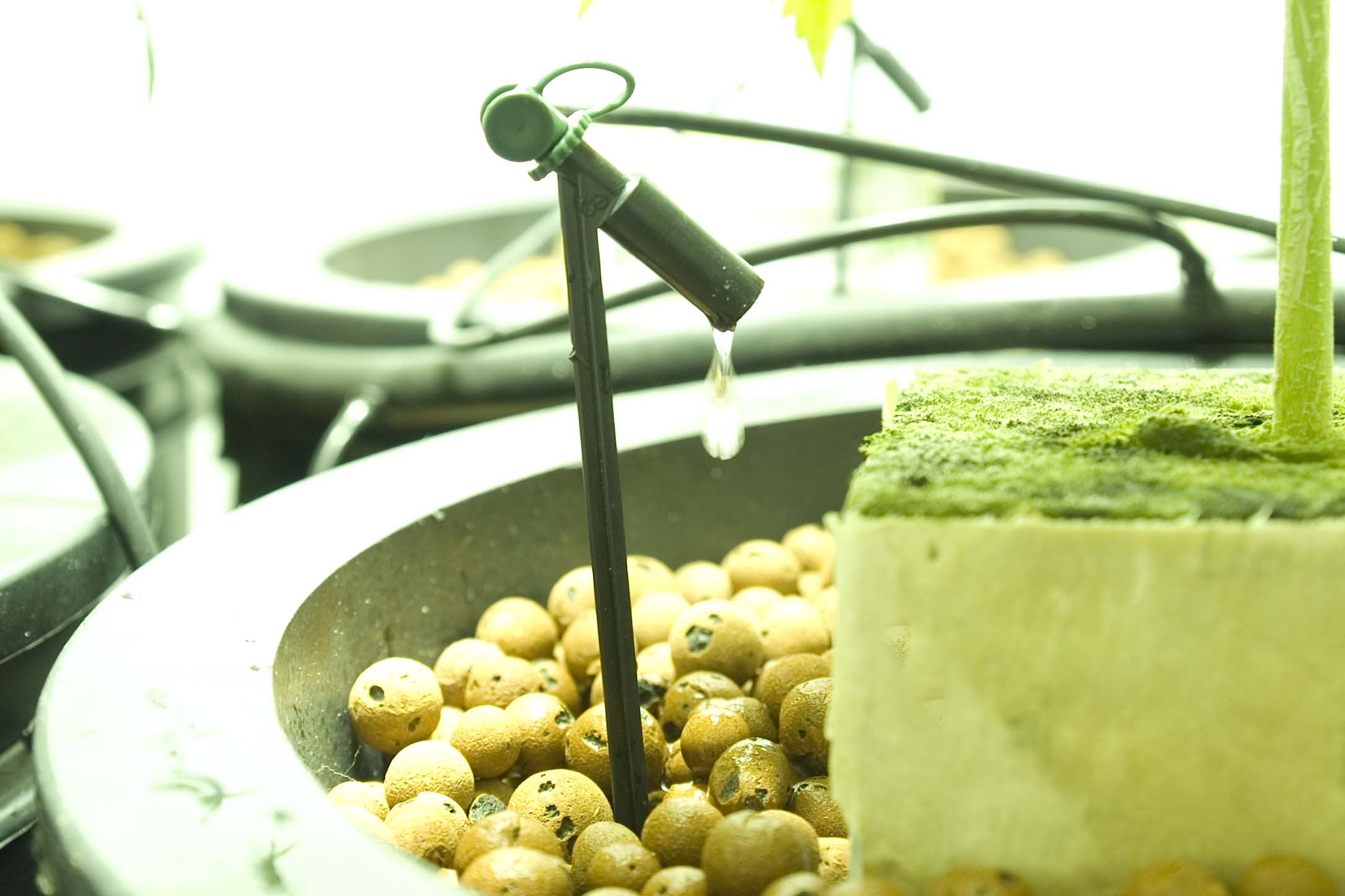 There are six different emitters used to draw water from the lateral line to the root zone of the crops.
There are six different emitters used to draw water from the lateral line to the root zone of the crops.
1. Black alkaline pipe with 1mm hole and a socket.
2. Micro tube 1mm dia.
3. Nozzles
4. Self flushing type
5. Double walled pipes.
6. Leaky pipe or porous pipe.
1. Black Alkalene Pipe with 1mm Hole and a Socket:
The water flow through the hole is the same as through an orifice. A hole of 1mm diameter can be punched on the lateral using a punching machine. According to the pressure in the inlet, the water is discharged though the orifice.
The emission uniformity obtained using this system is always about 90 %. When the flow through the lateral is laminar and the pressure is kept constant.
The uniformity coefficient can be calculated by the formula.
Eu= Qn X 100
________
Qa
Where,
Eu- uniformity coefficient
Qn-minimum emitter discharge
Qa-average discharge.
The field evaluation of Eu is made from emitter discharge taken from three to five locations along four different lateral lines equally spaced throughout a representative area.
From the readings it was seen that, by using the hole and socket method for drip emitters, it is cheapest and it can be made of use of satisfactory for normal fields of flat topography for small area.
2. Microtube 1mm dia (Emitters) :
These are also most effective as an emitter. Cost is also low and adjustment of flow is also easy. It also satisfies the following conditions.
1. The flowing can be adjusted even for very low rate due to minor differences in pressure.
2. Uniform size and cross section is also available.
Through these micro tube emitters the reading indicates that uniformity upto the 90% to 95% can be achieved using the outlet on a level ground.
3. Nozzles:
Two types of nozzles were made locally which are suited for use as emitters. One nozzle is provided with threads and hole is drilled to the other end. The nozzle is to be inserted in the lateral line by punching a hole.
The disadvantages of the nozzle are that when the pressure is high. Water comes out as a sprinkler and does not wet the root zone around the plant.
Another nozzle is more or less like the joint where the bend is provided for dissipating the energy. On the top is a cap which facilitates cleaning. The emitter is suitable where water is to be applied for leaching requirements also.
4. Self Flushing Type:
Different types of self adjusting nozzles are manufactured to supply constant discharge even if there is pressure variation. The discharge adjustment is accomplished by providing rubber washer which varies the opening for flow.
5. Double Walled Pipes:
They are two pipes made of glessible polythene one within the other.
Water in the inner tube at high discharge rate and pressure varying between 3to 15 m and passes through small perforation in the inner pipe to the space between the two from where it flows out at low pressure through larger perforations in the outer wall.
Discharge per Outlet is a Function of
1. Pipe diameters
2. Inlet pressure
3. Ratio of numbers of hole between inner and outer pipes.
This method is cheap comparatively and sometimes used economically for one or two growing season and then discarded.
6. Leaky Pipe or Porous Pipe:
It is a continuous line source emitter used for subsurface irrigation. A porous rubber pipe that is tough and flexible it can withstand extreme changes in temperature and pressure.
Water passes through elastic pores in the pipe that open under low pressure and close when the system is not operating.
The Main Advantages of this Pipe are-
1. Saving of water up to 50 to 70 percent, since no evaporation or runoff occurs since pipe is buried underground.
2. Uninterrupted cultivation and harvesting.
3. Wind effect is absent.
4. Reduced maintenance hence labour saving.
5. Good crop growth.
6. No clogging of emitters.
The capillary actions of soil draw water from the porous rubber pipe which supplied water continuously. Once the soil becomes saturated further flow gets stopped.
The pipe is normally placed 10 cm underground depending on the crop and soil type this can be changed.







